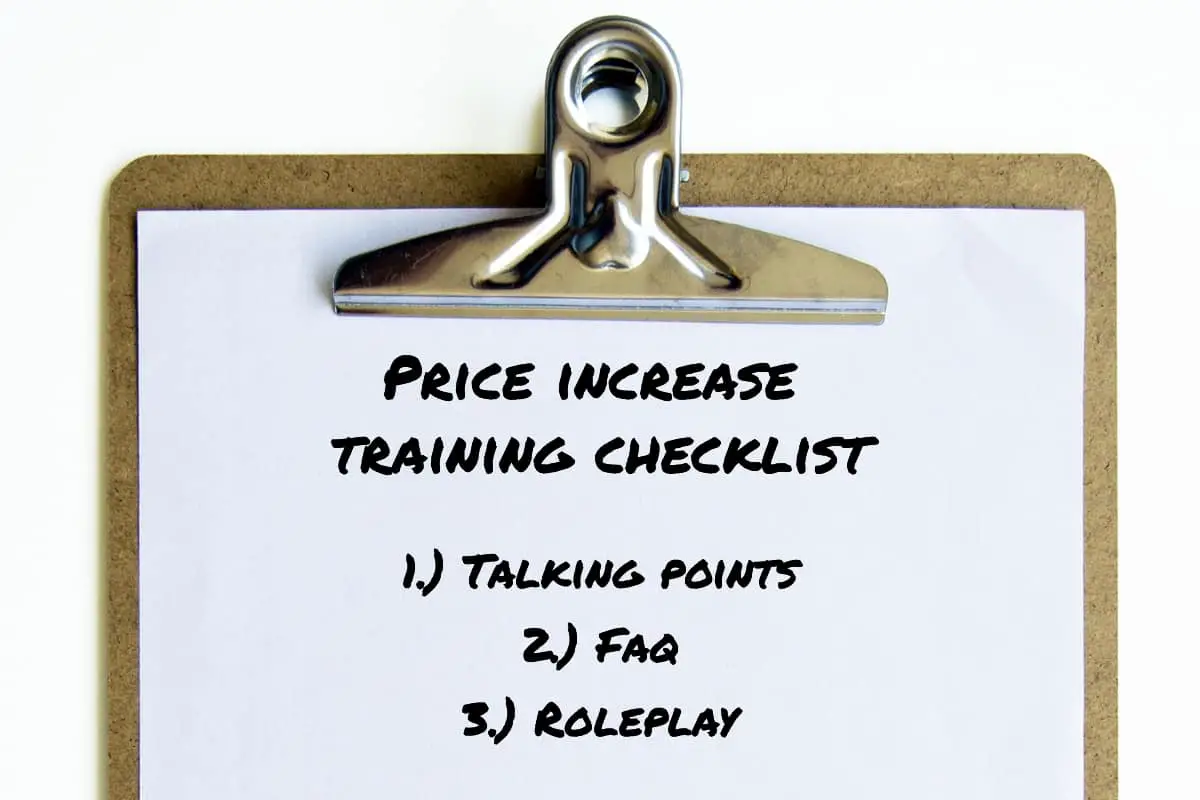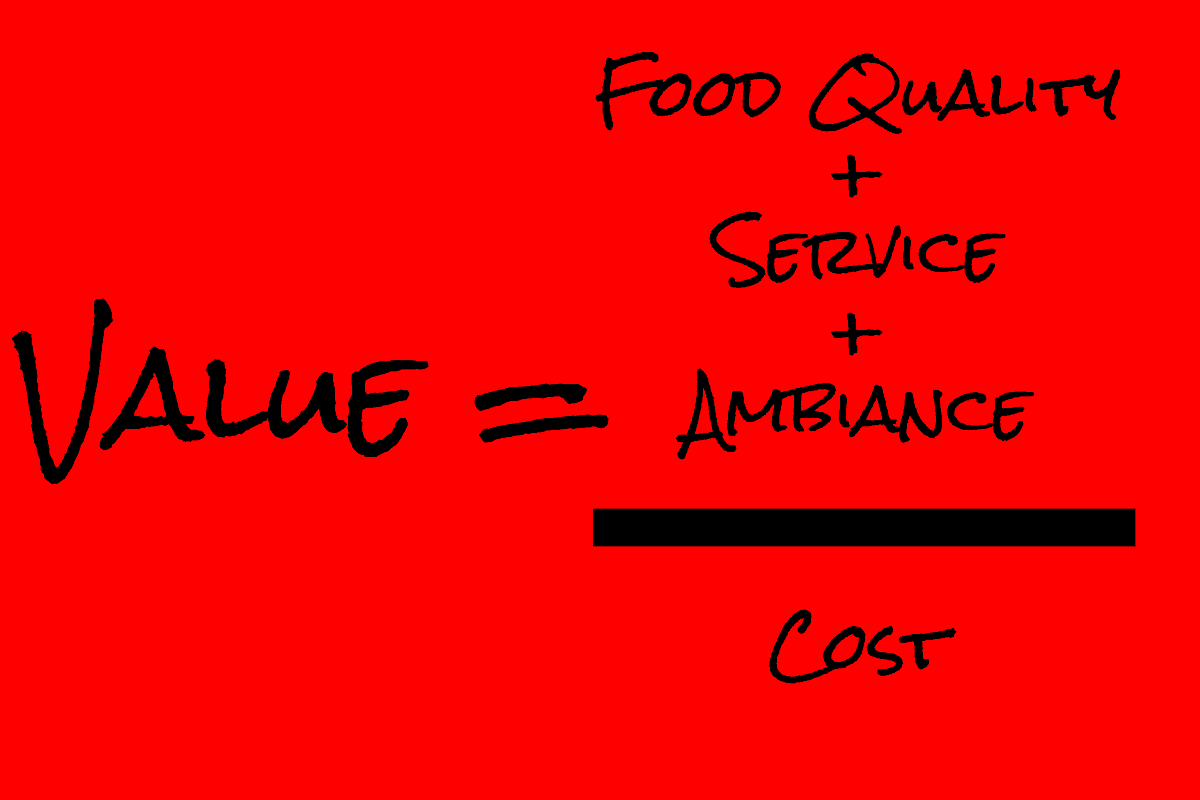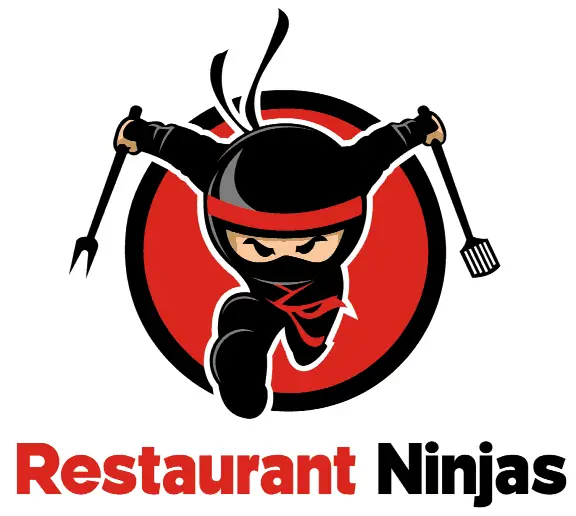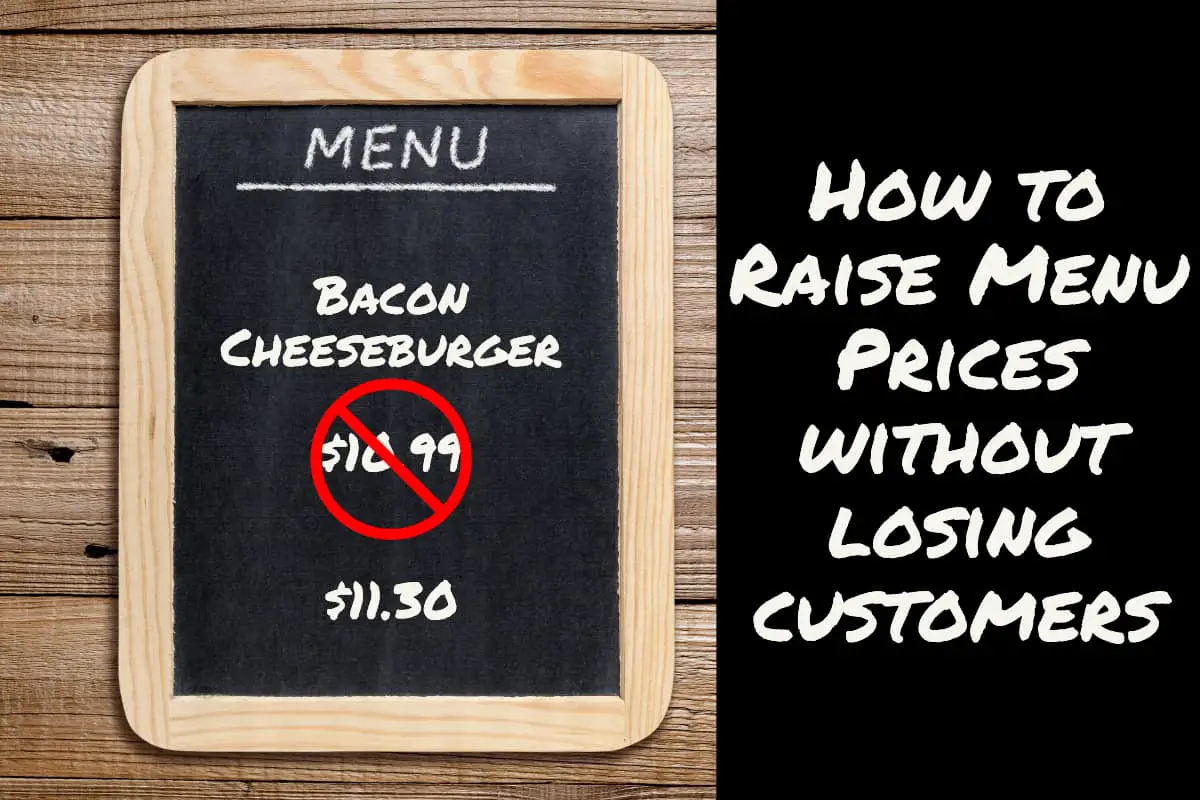Just mentioning the idea of raising menu prices is a simple way to incite fear and anxiety into even the most experienced restaurant operators. Raising prices doesn’t need to be a scary topic. It is a necessary part of running any type of business, no different than doing inventory or taxes.
How do you raise menu prices? The best way to raise menu prices is to have your team, your establishment, and yourself prepared for a well-timed rollout that is part of a long-term pricing and valuation strategy. By timing and executing the price increase efficiently, you can avoid angering customers.
If it’s just part of doing business, why do we approach price increases so apprehensively? Are we afraid of scaring off customers? Do we wonder if we haven’t “earned” the increase and doubt ourselves for it? Maybe we are just worried that we are going to price ourselves out of the market? I think it is a combination of all the above combined with a lack of knowledge on how to raise prices without angering our customers. Luckily, we are going to dive deep into that in this article.
How to Raise Prices Without Angering Customers
1. Be Prepared for Some Backlash
I am not going to lie to you: there are going to be some customers who are none too happy about your decision to increase prices. Trust me, they will not be shy in sharing this with you. I can almost guarantee that there will be some regular who looks you in the eye and says that she will NEVER be back because the price of iced tea increased fifteen cents. (Spoiler Alert: she will be back. Probably tomorrow).

With that said, I want you to remember something: The customers who are unreasonably unhappy about a price increase are the minority of your overall customer base. The adage of “you can’t please everyone” absolutely applies here. Instead, focus on the majority and rollout every pricing increase from this day forward strategically and with confidence.
2. Think Long Term
First, you should never raise the price of a single item by itself. Changing your price of a bacon cheeseburger by 15% is much more alarming to customers than a 1.5% average price change across the entire menu. An increase that drastic would not go over well, meaning you need to think long term about pricing strategy. A better solution is to take smaller price increases more often rather than doing a less frequent but drastic increase.
I recommend that prices get increased one to two times per year. You should complete an analysis of how your prices compare to your competitors once a year to help you decide where your pricing inefficiencies lay and plan from there.
I think the best month of the year to increase prices is in October. My theory is that October is the point in the year that the public reaches a perfect storm of being busy, least concerned about finances, and at their financial peak. My second favorite month is May. By May, most people have paid off the holiday debt and have received their income tax returns.
The most important thing to remember in regards to the timing of a price increase is that you want to space them out and keep them regular. May and October are just my hypothesis; there is zero science behind it. There is a case to be made for just about every month of the year with the only exception being December, which I would stay away from. People are crazy enough during the holidays! The important thing is to increase regularly and never too much at one time.
Another part of thinking long term is analyzing the results of your most recent price increase. You would expect to see a sales increase, so the best way to measure a dropoff is by measuring guest count. The other thing to look at is the impact it had on your bottom line.
Lastly, consider future cost increases that are likely to happen in the next twelve to twenty-four months and factor that into your plan.
A great example of this would be the regular changes to minimum wage happening across the United States. If your state has a minimum wage increase slated to take effect shortly, then it should be factored into your price increase, so you do not find yourself needing to make another adjustment a few months into a change.
3. Prepare Yourself
Prepare yourself for the potential backlash I previously mentioned. Just knowing that the backlash is probably inevitable will make dealing with it when it happens that much easier.
Remind yourself why you are increasing prices. Unless you plan on using the extra revenue generated to turn the basement of your home into a Scrooge-McDuck style vault and fill it with pennies, then you’re doing this for business reasons, and you are 100% in the right. Not only is it your right as a business owner to increase prices, but it is also your responsibility to ensure that all parts of the restaurant are optimized. This responsibility includes the bottom line.
4. Watch Your Wording
In the sales world, using the correct wording is a huge part of creating compelling copy (which is the wording on advertising or print materials). The way you and your team talk about the price increase can affect the perception of your customers. You can use the power of words to help influence the way your customers respond.
The first way to do this is by forbidding the word “raised” or “increased” to be used in front of customers when discussing a price increase. Instead, you simply had a pricing “change.” The word “change” is going to be much less likely to trigger unhappiness than “increase” or “raise.”
Next, never apologize for increasing your rates. By apologizing, you are subconsciously telling them that you were wrong for making the change and there wasn’t a valid reason behind it. If the situation warrants an apology, instead apologize for their frustration or inconvenience with the change.
You should also ensure that the menu and its description of the item SELL the item and justify the cost. Salesmanship is not a strong point for me, but here is an example:
Bacon BBQ Burger
8oz Patty Served with bbq sauce, bacon, an onion ring, and cheddar cheese.
or
The John Wayne Burger
Saddle up with ½ Pound of fresh ground chuck, grilled to perfection over our hickory woodfire grill, topped with a house-made onion ring, hickory-smoked bbq sauce, and famous smoked cheddar cheese.
Sign me up for the John Wayne Burger!
It is entirely normal if you feel slightly uncomfortable as you read those last few paragraphs as long as you recognize that words have power and by using them in a way such as I just did is entirely ethical. Being creative in your copy describing your products shouldn’t make you feel dirty.
5. Prepare Your Team
If you think it’s fun hearing how your price increase of ice tea ruined someone’s life as the owner, trust me when I say it is ten times worse for your employees. You owe it to them to ensure they are prepared to handle both questions and complaints.
The best way to do this is by educating them. Be honest and transparent about the reasons you are increasing prices. The better they understand the situation, the better they will be able to address customer concerns and ease any unhappiness they are feeling. Your employees will respect you more for your transparency with them.
Use Pre-shift meetings to have 10-minute training sessions with employees and managers regarding the price increase. Make sure to take your time and cover all aspects of the price increase with them. There should be three pillars to this essential training that you can combine in a single one-page laminated training document that includes: Talking Points, FAQs with canned responses, and roleplay scenarios.
Talking Points: This would take up the front page. Here is where you put various talking points for your employees about the price change, the reasons behind it, how to respond to guest questions, your rationale, why the product is still competitively priced, and some examples of how to explain things to customers in various scenarios. For instance, if someone asks why there is a price increase, have them respond with something like:
The quality of ingredients is really important to us. To continue to use those ingredients on our menu, it has become necessary for us slightly increase prices.
You can also include a list of things you don’t want employees to say. I, for one, hate it when I automatically hear the one-word response of “inflation.”
Frequently Asked Questions (FAQs): This will take up half of the back page of your training document. It’s as simple as it sounds: write out every possible question that your team or customers might have and the answer they should give.
Roleplay: Come up with a couple of different scenarios where you play the customer and have your employees practice handling your comments and complaints about the price change. Afterward, you can let them know how they did and offer feedback.

Best Practices When Raising Prices
You need to plan your timing of price increases very carefully. The worst thing you can do is raise prices at a time that public perception of your restaurant is not in a good place.
A larger chain, like say, Cracker Barrell, will find it much more difficult to time a price increase. There are two big reasons for this. First, they have a ton of units across the entire country. Since price increases are usually done across the board and are planned far in advance, they aren’t able to time their price increase with customer satisfaction or public perception. One poorly timed tweet about hair in food will make a price increase look that much worse.
It’s much easier to time your price increase around customer satisfaction if you operate a single unit (or just a few).
Another poor time to raise prices is when sales are down. If you are showing a drop in sales versus the prior year, increasing your rates is NOT a smart idea.
Keep in Mind
Whenever you raise prices, expect customers to adjust their expectations subconsciously. Ironically, these same customers don’t lower their expectations at establishments with lower price points.
Make sure that all parts of your operation are at the top of their game. If you want to set yourself up for success, ensure the restaurant is BEYOND clean the day before the rollout and staff a few extra employees per shift for the week to ensure that your service is above and beyond as people adjust to the changes. Having a smooth first week of a price increase will also put your staff at ease as well.
One other thing to keep in mind is the so-called “veto-vote.” The veto-vote is the member of a prospective party, be it a friend, coworker or family member, that looks at your menu and says “everything is too expensive, I don’t want to eat there, let’s pick somewhere else.” The best way to avoid this is to have a couple of lower (but appropriately) priced items available.
Keep in mind that “expensive” is a perception. It is a customer’s perception of what they paid for versus what they got that determines whether or not you are viewed as “expensive” or overpriced. I read a study recently that concluded that people would pay up to 70% more for an identical item if it’s perceived to come from a more luxurious place.
This is important to menu pricing because managing the customer perception of expense is the most crucial factor in pricing a menu and increasing prices. The way to do that is by ensuring the price is still a value.
Remember the Value Equation
The name of the game is value. If customers feel like the food, service, and experience at your restaurant match or exceed the price they paid, then they feel like your pricing was at the worst fair and, at best, a value.
In foodservice, the value equation is simple. Value is equal to the overall experience divided by the cost. Overall experience is the sum of the service, food quality, and ambiance.

What does this have to do with raising menu prices or pricing a restaurant menu? Only this: The total cost of a visit to your restaurant cannot exceed the perceived value of the customer.
My favorite way to illustrate the value equation is to use the example of a family trip to Disney World.
A family trip to Disney World is a bucket list item for many people. According to magicguide.com, Walt Disney World sees an average of 52 million visitors each year.

Not surprisingly, not even considering the cost of traveling to Orlando, a trip to Disney World is VERY expensive. A 2013 study calculated a cost of $1268 per person for a 6-night / 7-day vacation. This is an old study, though, so if you adjust for annual inflation, the cost ends up at $1400 per person. That is crazy expensive!
Despite the crazy price tag, you don’t hear many people leave Disney complaining that they feel like they didn’t get what they paid for or that they were ripped off. Why is that? Its because It’s not a vacation, it is truly a once in a lifetime, magical experience that you will never forget and will be talking about for the next decade to come.
It might have been very expensive, but the value exceeded the price. When you are adjusting prices for your menu (or setting the initial prices for that matter), keep the value equation in mind. All the math in the world that you use when pricing a menu means nothing if the visit to your restaurant does not exceed their expectations based on the cost fo the visit.
Timing a Price Increase
Timing a price increase is a skill that takes time to develop. It should be based on a combination of circumstances, both market-driven and cost-driven.
Cost-driven indications that it is time to increase prices are usually pretty obvious. If the cost of goods, fixed costs, or labor is rising, that’s a good sign that it might be time to start planning a pricing change.
Market-driven indications are harder to identify. Essentially, these reasons involve ensuring that your not unnecessarily undercutting your competitors with prices that aren’t driving traffic. Market-driven reasons are about not leaving money on the table. Why charge $10 for a burger when your competitor charges $12? Instead, charge $11, and you can be the better value and still increase your revenue on that burger by 10%.
Hopefully, after reading this, you feel more confident and prepared to make a pricing change in your restaurant. Remember that it is your responsibility as an owner to see the big picture and not just focus on keeping a portion of your customer base happy with the pricing.
I’m going to close with one thing that I want you to remember when you start to feel anxiety and doubt when you raise your prices. Every year, rent, taxes, insurance, and utilities see a pricing adjustment, and people just accept it as part of life. Why should you changing your menu prices be any different?

